PURNIMA’S JOURNEY TO THE SUMMIT
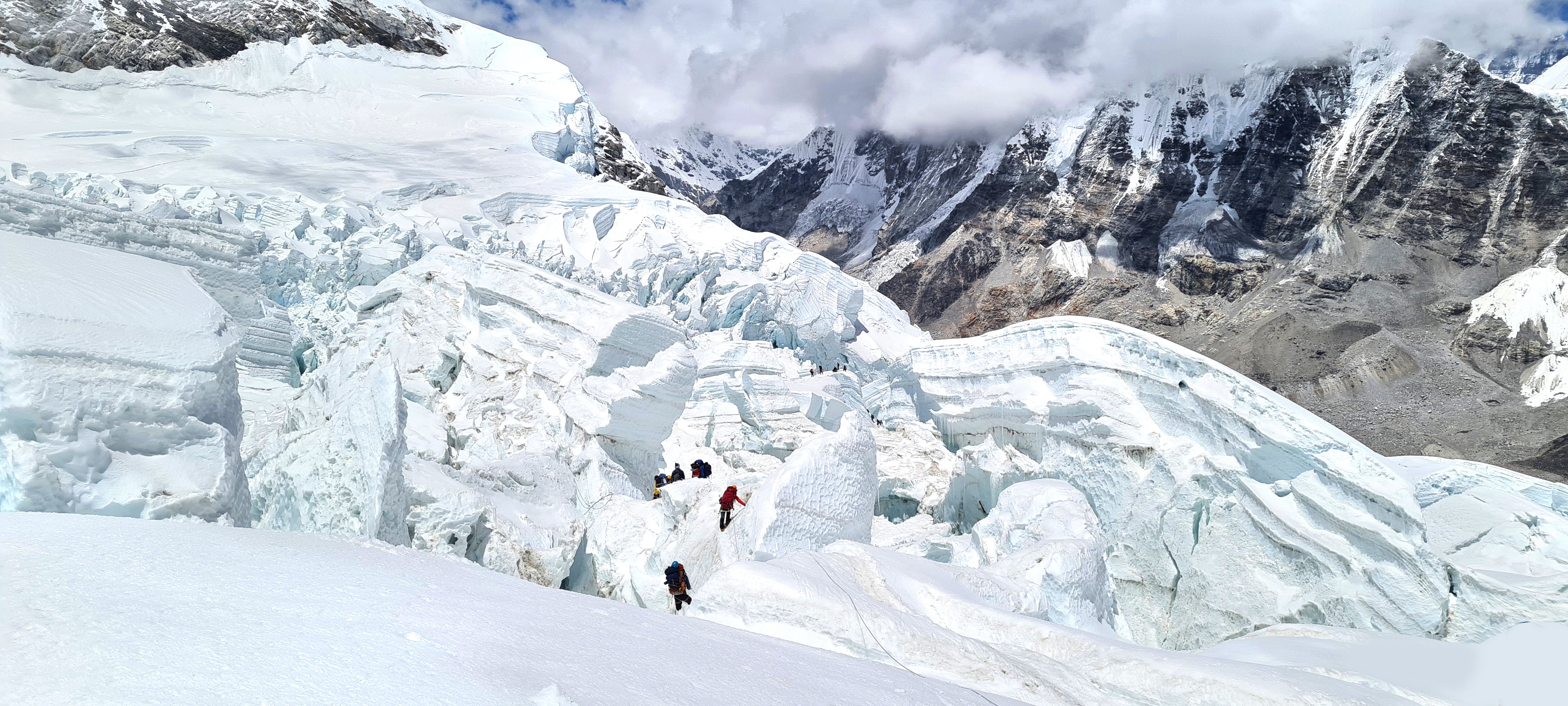
TELL US ABOUT YOURSELF, FAMILY, INTERESTS, WHAT KIND OF WORK YOU DO?
“I was born and raised in a small village in Nepal. My ever-supportive parents are farmers and I have always been surrounded by the beauty of nature. Professionally I am a Photojournalist and I have always loved capturing the natural world, I love adventure and to explore nature. I would say I am a confident and fearless person and I have always enjoyed taking on new challenges. I think it was this combination that ultimately led me to become a mountaineer.”
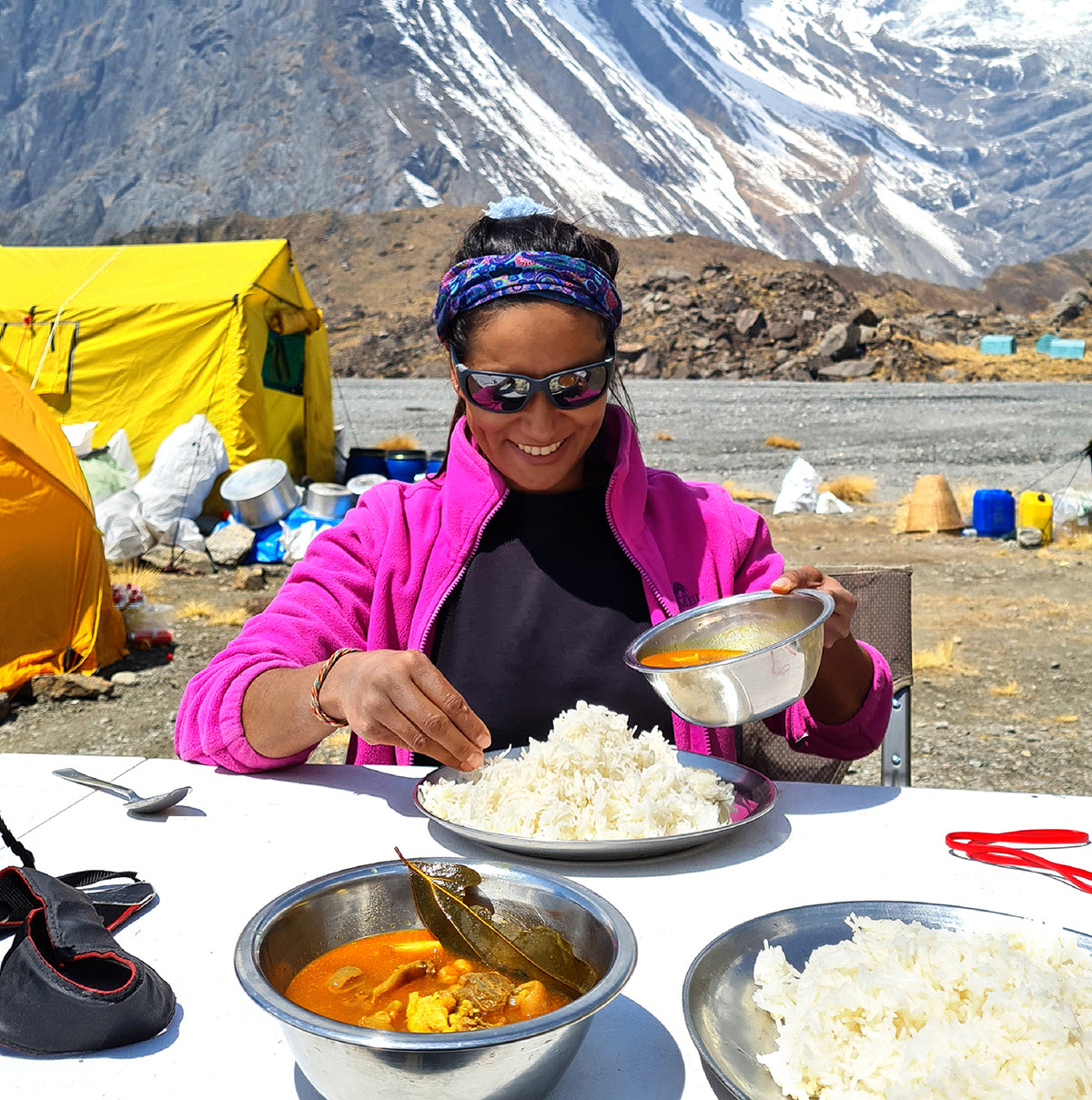
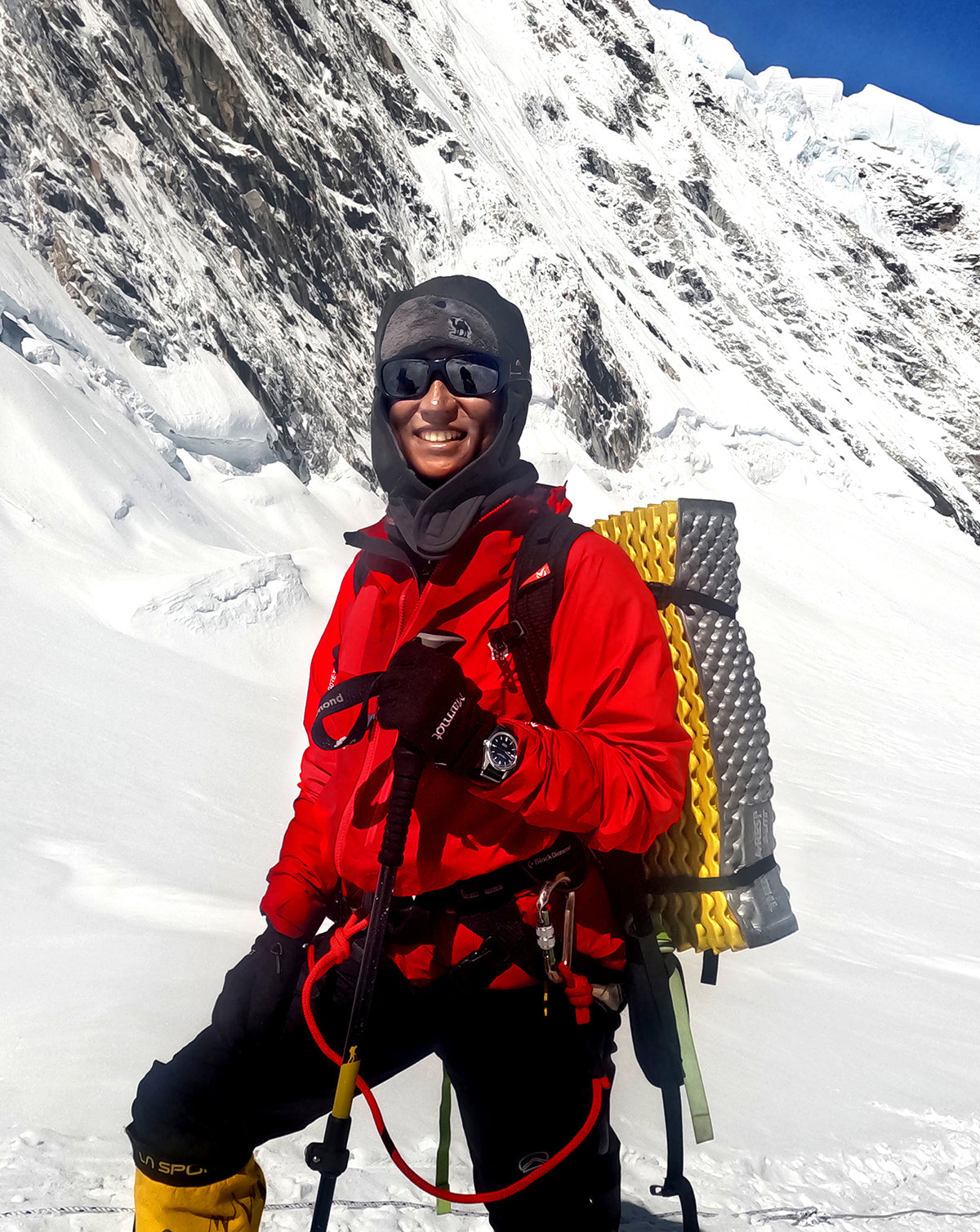
HOW DID YOU GET INTERESTED IN MOUNTAINEERING AND HOW LONG HAVE YOU BEEN DOING IT?
“As a photojournalist, I am always traveling to different parts of Nepal to cover various events. Back in 2017, I had the opportunity to cover ‘Everest Day’ on the 29th May which celebrates the day Edmund Hilary and Tenzing Norgay successfully summited Mt. Everest. People from around the world participate in this marathon, which starts from the Mt. Everest Base Camp to Namche Bazaar in Khumbu valley. On that day I was mesmerized by the beauty of the mountains being in their midst was quite overwhelming, it was in that moment that I felt a strong desire to climb and summit Mt. Everest.”
WHEN DID YOU CLIMB YOUR FIRST MOUNTAIN OVER 8000m AND HOW MANY HAVE YOU CLIMBED ABOVE THAT ALTITUDE?
“As soon as I returned from ‘Everest Day’, I contacted anyone and everyone who could help me prepare for my first climb. At first no one took me seriously and laughed at my desire, but that just made me even more determined to prove to myself that I could do it. I was told that climbing Mt. Everest, the world's highest mountain at 8848m is impossible for someone so inexperienced and that I should first attempt to climb only up to 6000m. One day the owner of an expedition company jokingly suggested that I should climb Manaslu, at 8163m it is the world’s 8th highest mountain. I took that as a challenge and started preparing immediately. On the 27th of September 2017, I successfully summited Manaslu, my first mountain above 8000m. This achievement boosted my resolve and gave me the confidence to keep going. Since then, I have climbed 8 of the world’s mountains above 8000m including Mt. Everest.”
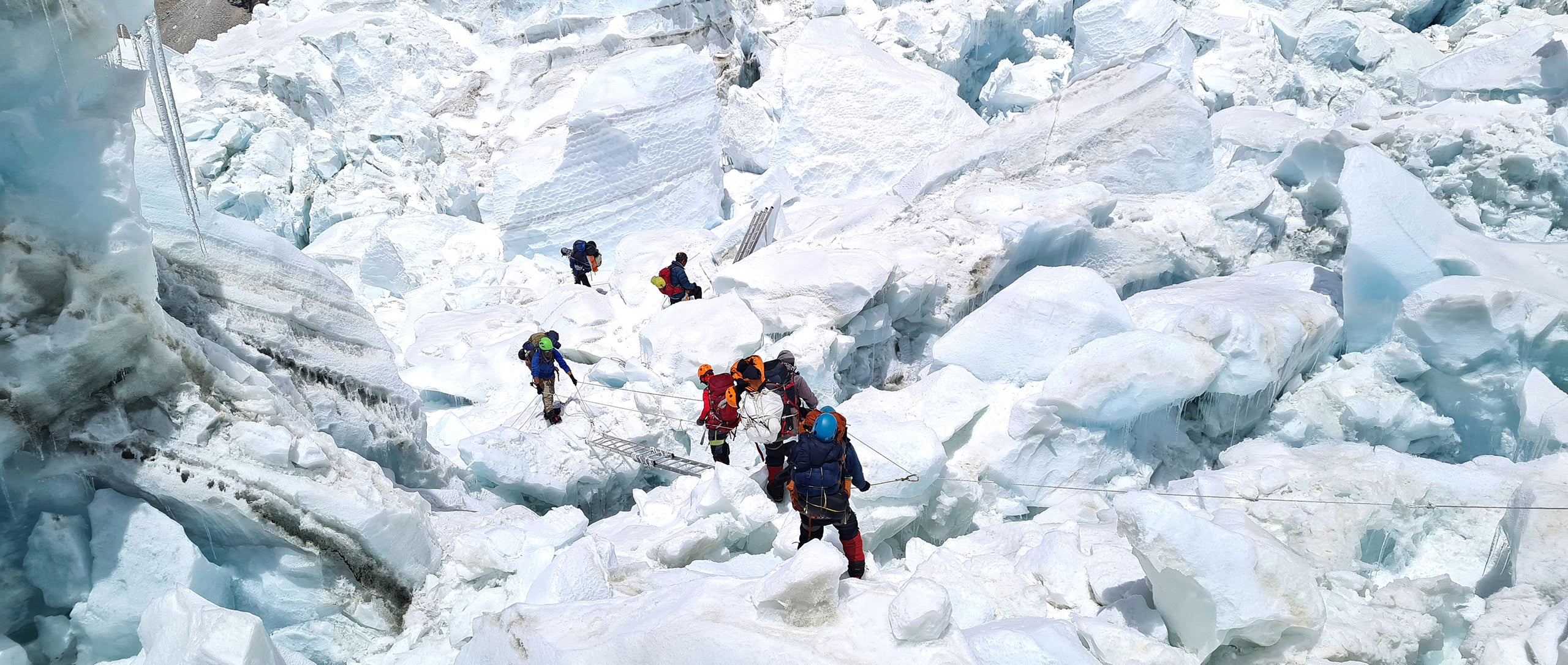
HOW IMPORTANT IS THE ROLE OF A SHERPA?
“Without the help of a Sherpa, a climb is not possible. Mountaineering is ultimately about teamwork and critical that we always to work together. From the very beginning of our journey at base camp, where we acclimatise our bodies for over a month before the summit. A group of Sherpa are the ones who look after us and take care of all our needs including food, water and services, route guide, training, everything. Until we reach the summit and back, they are always beside us, guiding and supporting our climb. I cannot thank the Sherpa I have met along my journey enough. Their love and support will always be treasured by the climbers. They are the hero behind the curtain.”
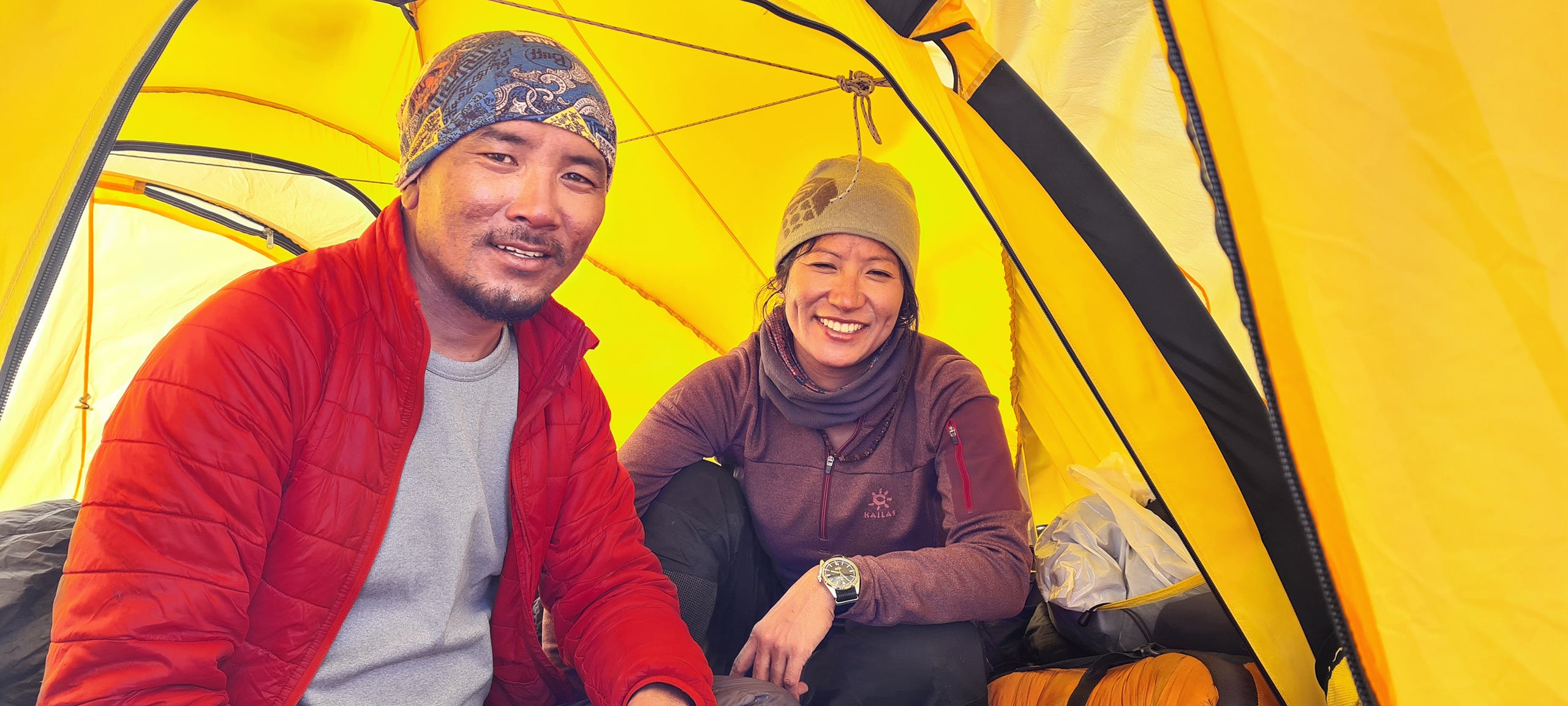
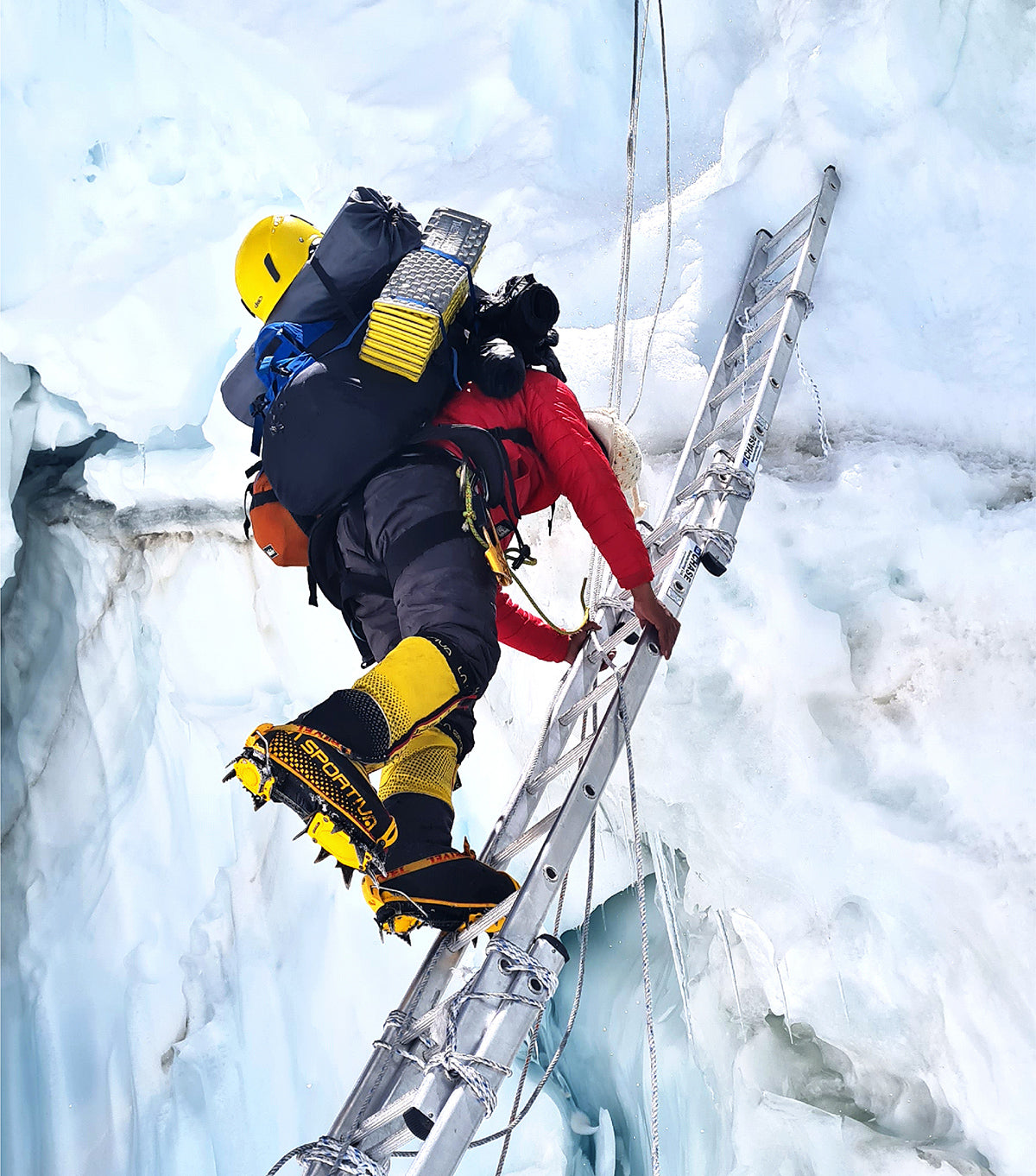
OBVIOUSLY ON A CLIMB LIKE LHOTSE, YOU NEED A SIGNIFICANT AMOUNT OF EQUIPMENT. WHAT ARE SOME OF THE ESSENTIAL ITEMS AND WHAT KIND OF WEIGHT WOULD YOU CARRY ON SUCH A CLIMB?
“I carry various equipment for my expedition. Sunglasses to protect my eyes from the harsh sun, A Helmet to protect my head from falling ice and rocks, a lot of climbing is also done during darkness, so I have head mounted lamps and spare batteries to help me see. I also carry specially designed gloves and socks to protect against frostbite as temperatures can fall as low as -60 C (-76 F).
For mountains 8000m and above, called the ‘Death Zone’, oxygen tanks are vital. Each bottle weighs 4-5kg and we require on average 3-4 bottles per person. Other equipment needed are ice axes, ropes and crampons, in total a backpack can weigh around 25kg. Non-essential items or nice to have, are mobile phones and camera equipment which I only switch on to take photos and videos for a short amount of time as battery life suffers in extreme cold. If I ever forgot to take any one of the essential equipment items, my expedition would be cancelled as every item plays a role in my safety and literally could be the difference between life and death.”
WHAT HAS BEEN THE MOST SIGNIFICANT CHALLENGE THAT YOU HAVE FACED SINCE YOU BEGAN MOUNTAINEERING AND HOW DID YOU OVERCOME IT?
“As I mentioned my family are farmers, we don’t have a lot of money and climbing mountains is very expensive. One bottle of oxygen alone is around 400 USD, so it has always been a challenge to fund my climbs and in Nepal it is difficult to get financial aid as there are many far more important things than supporting a mountaineer. But despite this challenge, I have never given up and have used all the resources I have available to fund my expeditions. I believe that life’s challenges and hardships should never stand in the way of pursuing one’s dreams.”
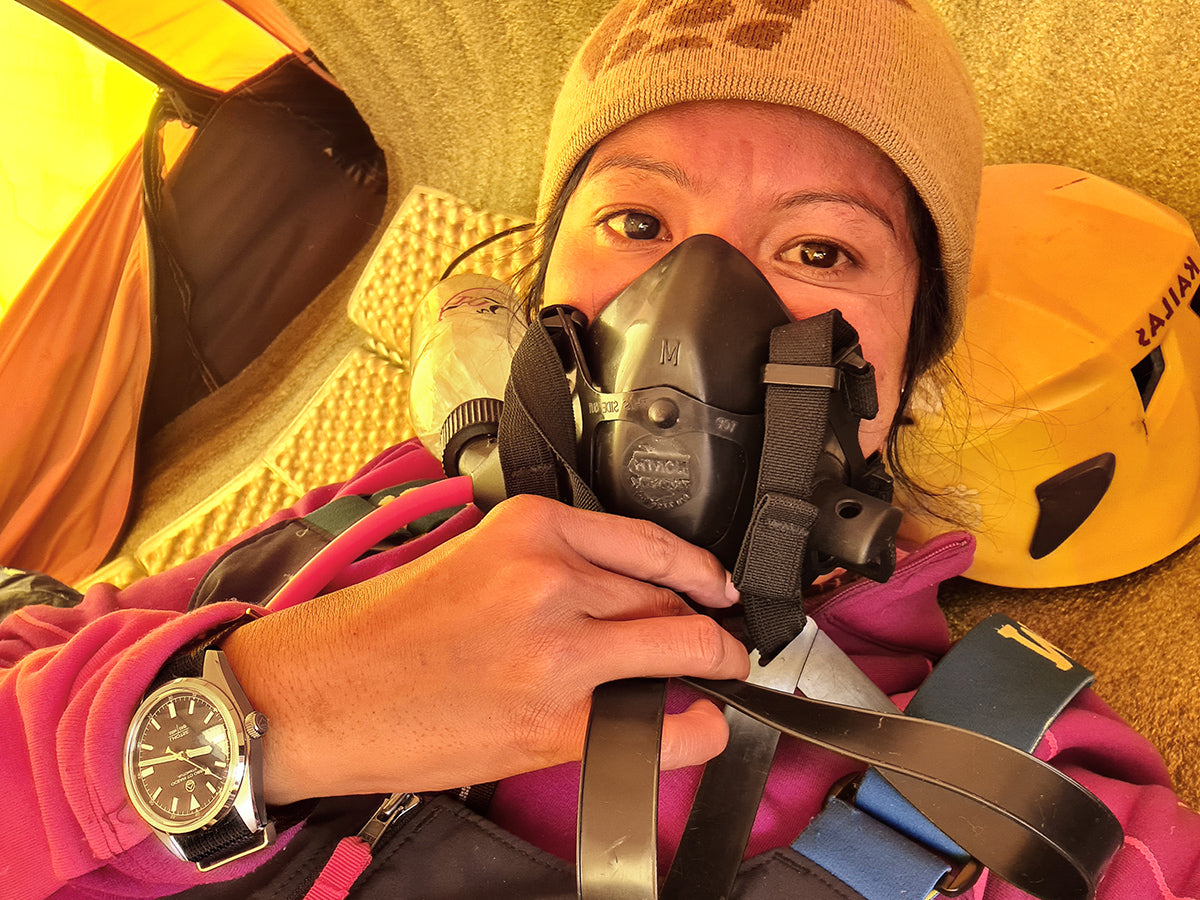
PRIOR TO CLIMBING LHOTSE, DID YOU EVER CONSIDER WEARING A WATCH?
“I have worn a smart watch on a few of my expeditions, specifically designed for adventure use but it never felt comfortable as it was too big, and the battery life was not sufficient. I ended up switching it off most of the time to preserve the battery and left it at base camp before the summit.”
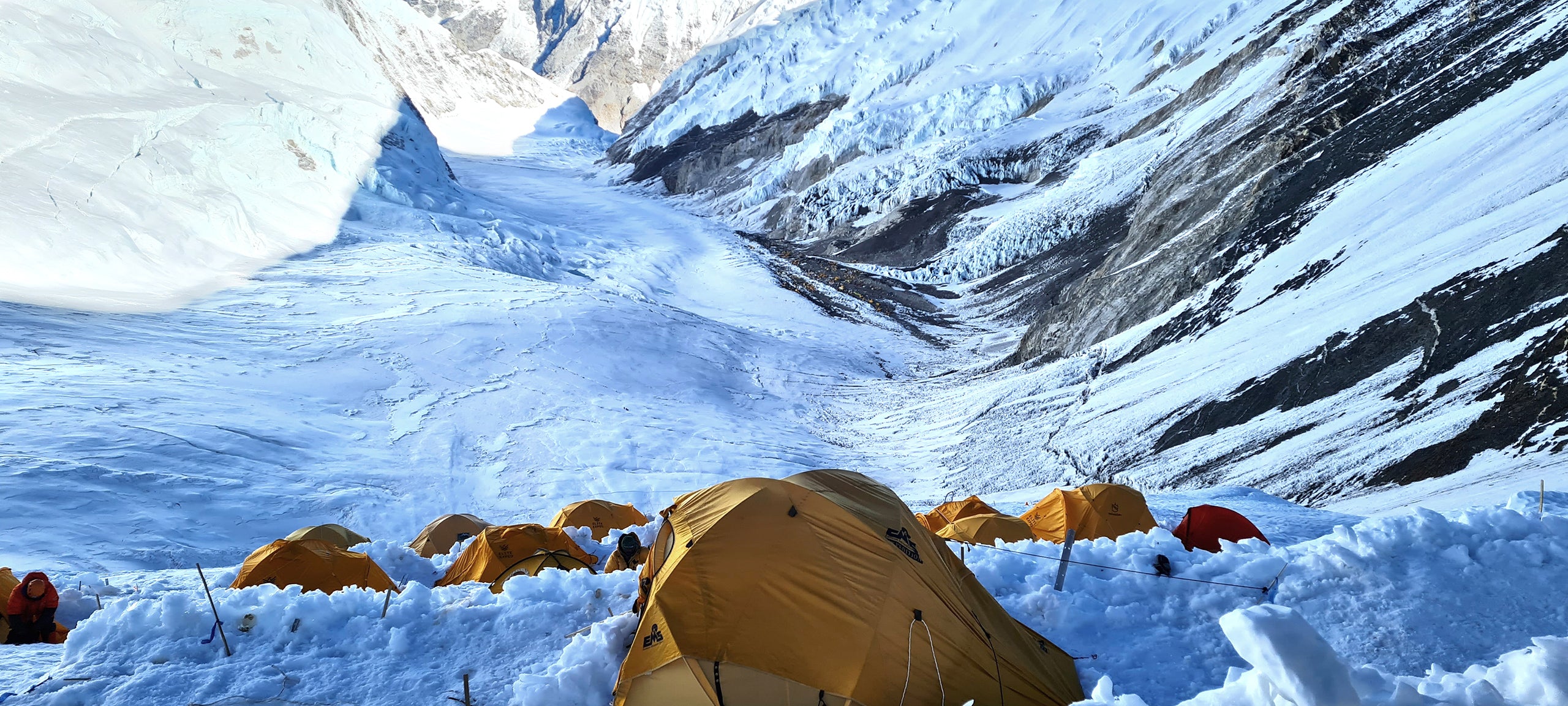
WHEN YOU WERE CLIMBING LHOTSE DID YOU FIND WEARING OUR WATCH USEFUL AND IF SO HOW?
“When I received the prototype of the Ocean to Orbit Lhotse, I was delighted with its size and comfort. The time only function was very legible, and the fact that it runs on my hand movement meant that I never worried about its battery life. Timing in mountaineering is also very important. The weather plays a big part, so we need to keep track of time and accurately calculate each stage. We always need to push ourselves to reach each designated point in order to successfully complete a climb. During my summit to Lhotse, I was making the climb with many other mountaineers. Once they knew that I was wearing a watch, they would constantly ask me for the time as their mobile phones were switched off. We were also able to save battery on the satellite phone by not using it to contact base camp to ask for the time. The Lhotse was always on my wrist, being 100m water resistant I even wore it when I took a dip in the Khumbu Ice fall when I returned.”
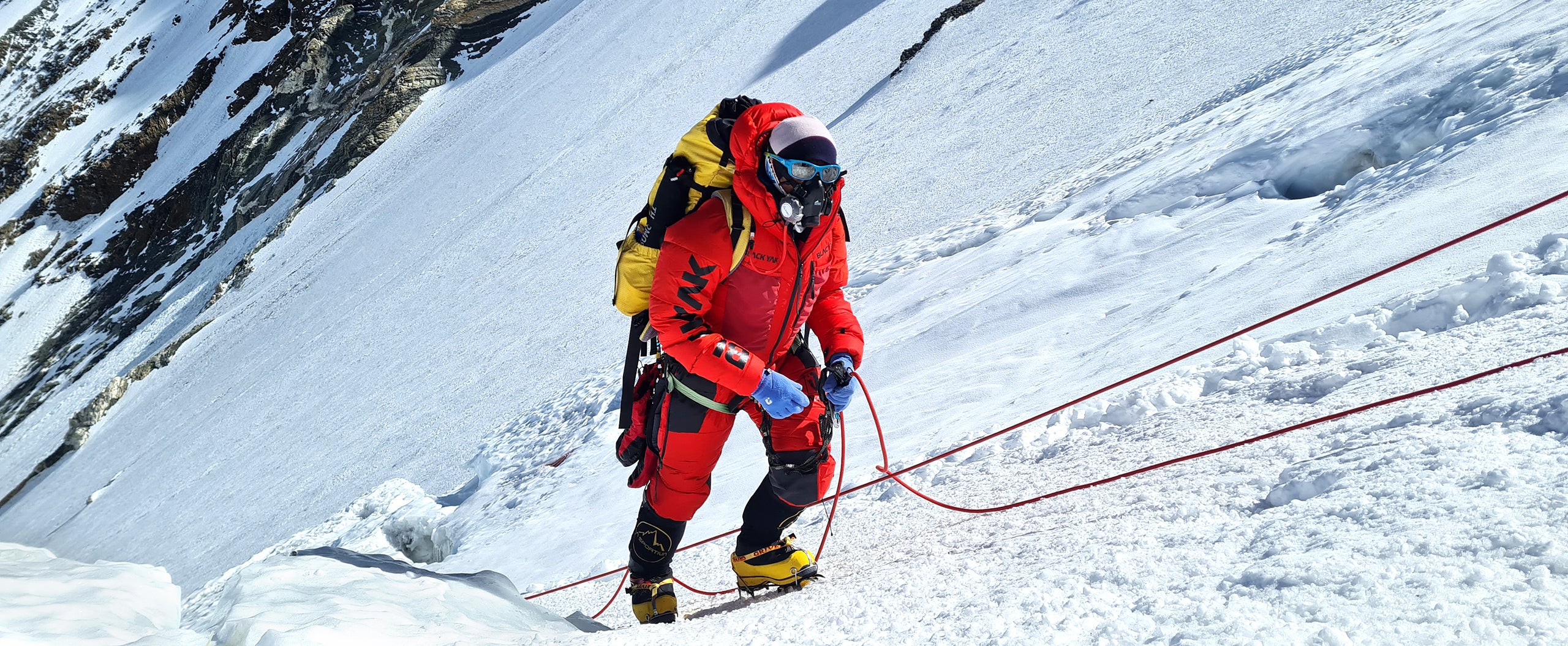
LHOTSE IS QUITE A TECHNICAL CLIMB, COMPARED TO MOUNT EVEREST, HOW DOES IT DIFFER AND WHAT IS THE MOST CHALLENGING ASPECT?
“I would not say that climbing Lhotse is more technical than Mt. Everest. They are both technical but in different ways. Lhotse It is a continuous climb with no change of scenery as we make the accent through a col (a route between the faces of two mountains). Due to this, it is very easy to lose your sense of time, to see how far you have climbed or how much further the peak is.”
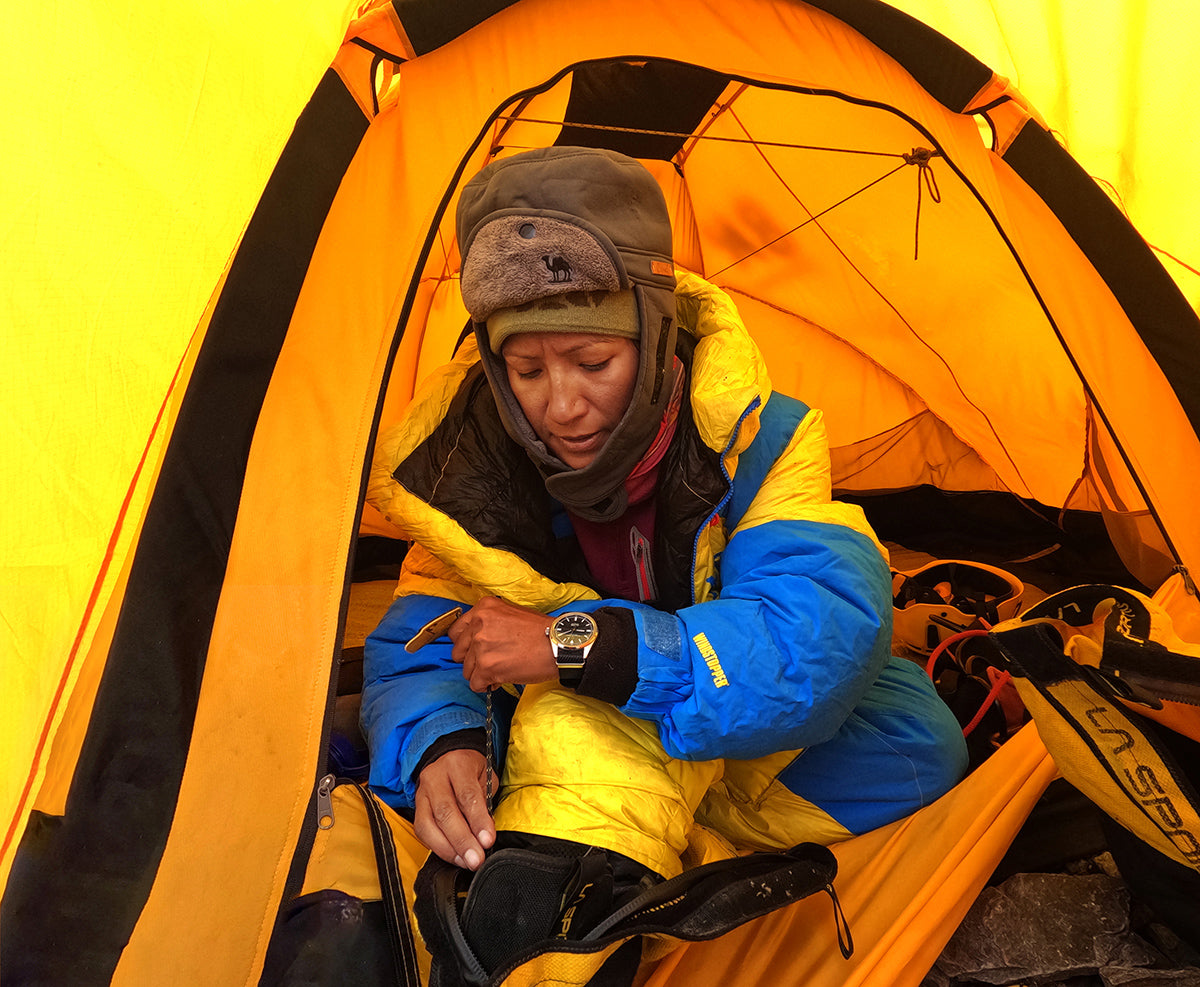
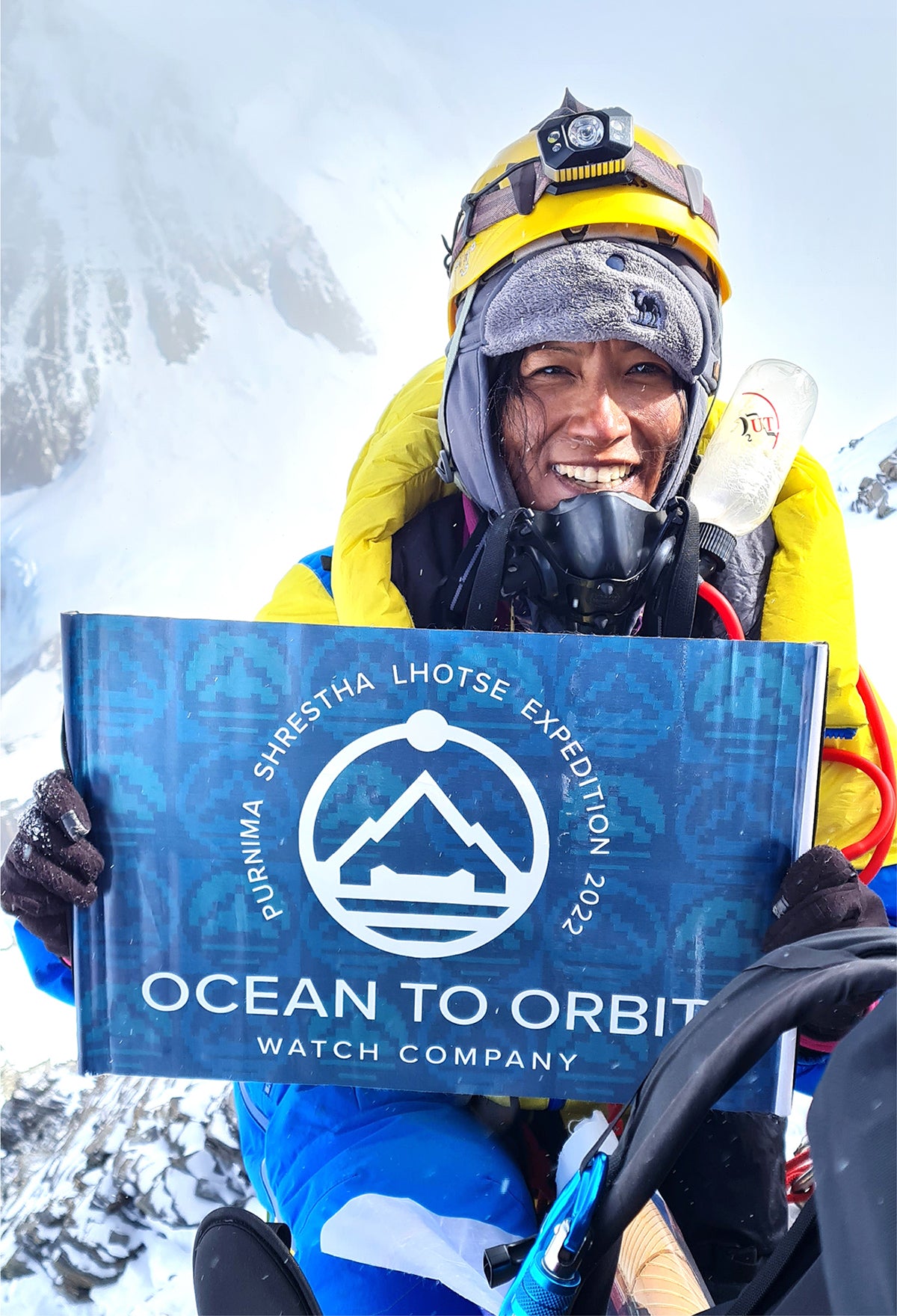
YOU SPENT ALMOST TWO MONTHS ABOVE 5000m WEARING OUR WATCH. DID YOU GET USED TO IT AND DO YOU THINK YOU WOULD CONTINUE TO WEAR IT DAILY?
“I got used to wearing the Lhotse very quickly. As mentioned before, the size and comfort are great, and the simplicity of its design made me want to wear it for any occasion. The fact that it helped me so much on my Lhotse expedition made me feel quite attached to it and I ended up not taking it off even after returning from the expedition. Soon after Lhotse, I took it with me on my expedition to Makalu, the world’s 5th highest Mountain at 8481m.”